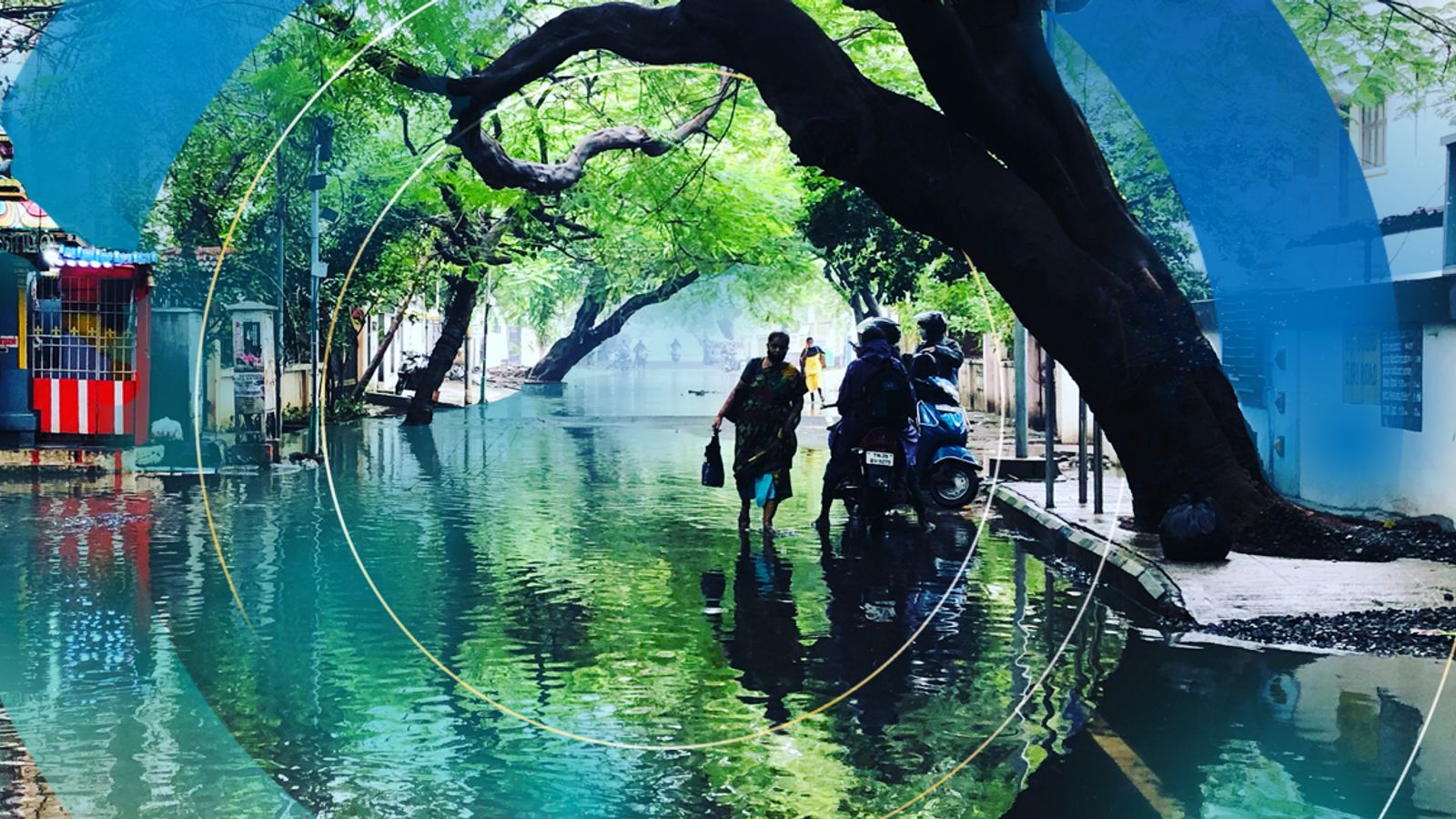We’re standing in the bedroom of a house, knee-deep in filthy floodwater.
Aluminium cooking pots bob around us, there are piles of wet clothes and a little red teddy bear floats by.
It’s grubby, sodden and miserable.
Please use Chrome browser for a more accessible video player
Kartik lives here with six members of his family but had to evacuate on Sunday after torrential and intense rain.
Everything is ruined.
Follow live updates from COP26 in Glasgow
“Pain,” Kartik says, pointing at his chest, “I feel pain.”
India: Fire kills four newborn babies at children’s hospital in Madhya Pradesh
Zika virus outbreak: Indian city of Kanpur sees 89 cases amid surge in infections
New Delhi wakes up to blanket of toxic smog and worst pollution all year after defying firework ban
Heavy rain in this part of India isn’t unusual, especially during the late monsoon season.
But two factors make this rain especially difficult, and they’re typical of the bind that many developing cities find themselves in.
Rapid urbanisation means that drains and ground that would naturally soak up the rain have gone.
Streets flood much more easily and remain flooded, as the water struggles to drain.
Then there’s extreme weather: like the unpredictable, intense and unusual rainfall that fell over Chennai on Sunday.
We know that, with our warming planet, the latter will become more frequent.
But we know cities can change.
They can adapt and become more robust.
They could certainly do with some of that resilience here where every new burst of rain brings a wave of genuine despair.
More than 20cm of fell in Chennai at the weekend.
In low-lying parts of the city that water has still not drained away.
In one community, where many people have been evacuated from their homes, we speak to a man called Somu.
His small house was flooded on Sunday and ever since his family has been sleeping in a government school.
There is no power at their house but Somu goes back during the day to try and guard what possessions haven’t been ruined by water.
“People can’t stay here,” he tells us.
“It’s very difficult. It’s been three days like this, this is the fourth day.
“People are really suffering here.”
His neighbours have all come together and paid for a huge pump to clear out some of the stagnant water.
Because this water simply isn’t going anywhere, and they are preparing for more to come.
Subscribe to ClimateCast on Spotify, Apple Podcasts, or Spreaker
For full coverage of COP26, watch Climate Live on Sky channel 525.
Follow live coverage on web and app with our dedicated live blog.
Get all the latest stories, special reports and in-depth analysis at skynews.com/cop26






















